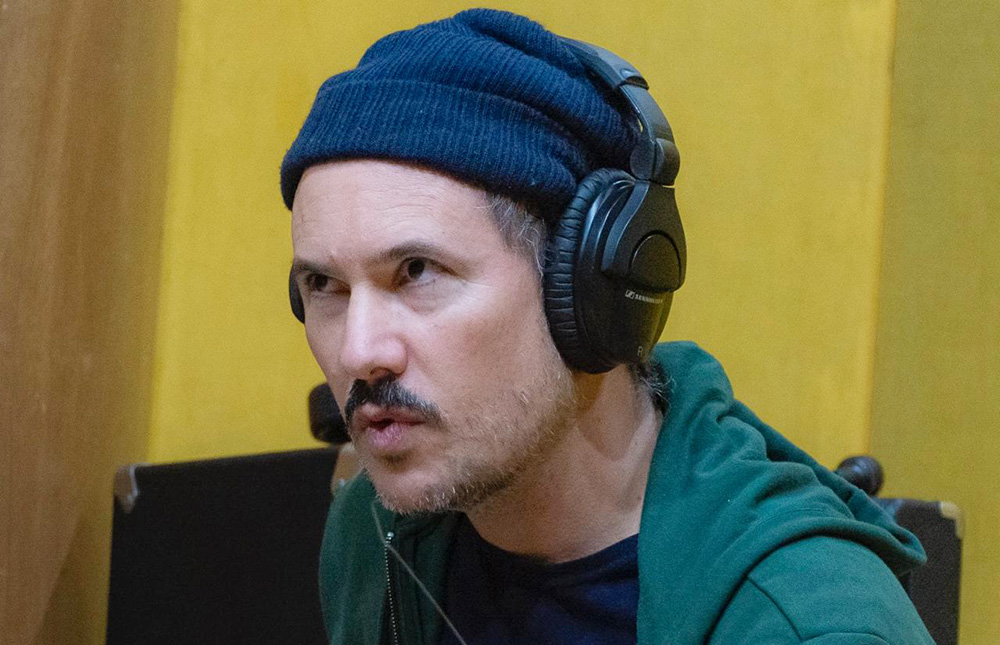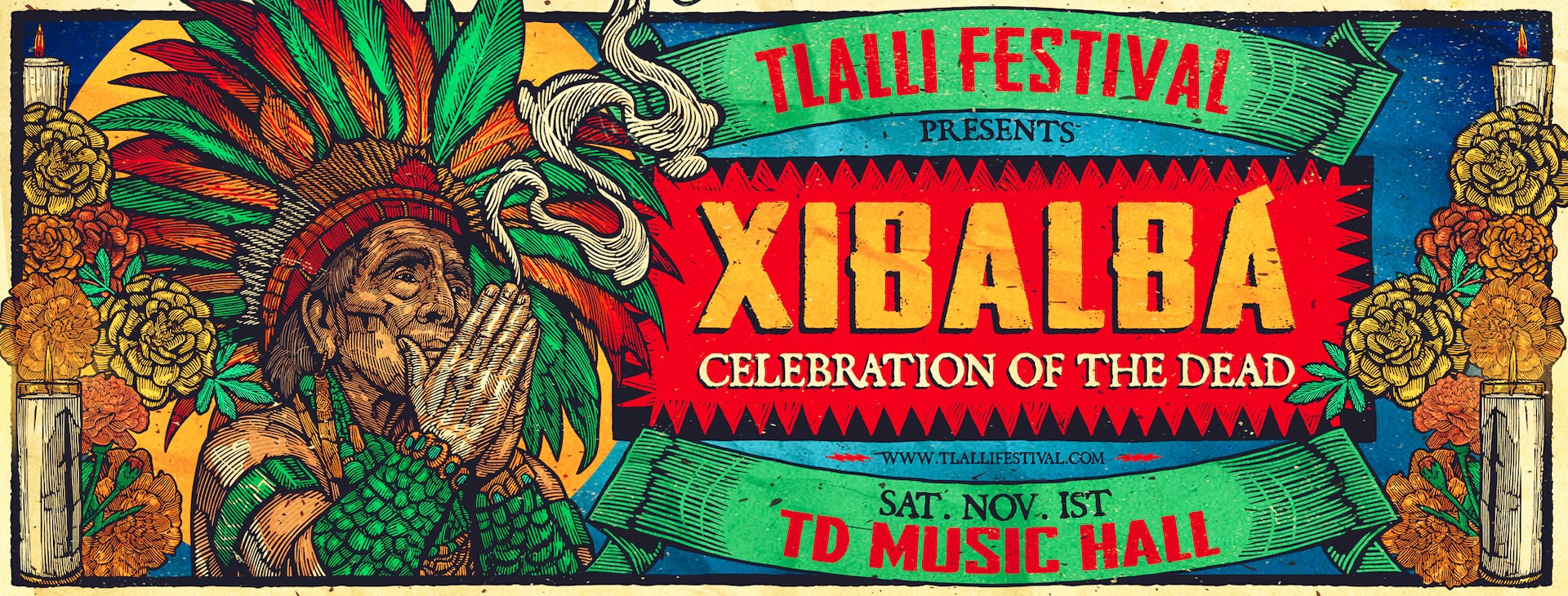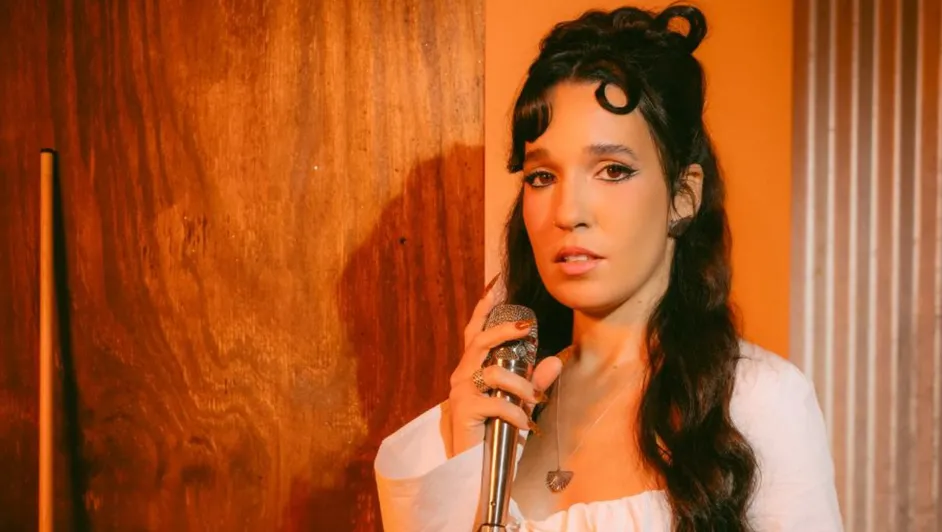It’s said that the bolero is not sung, it’s suffered. Well covered in tattoos, a little bit of a pin-up girl and a little bit of a tarot reader, the Argentine singer-songwriter Mel Muñiz is an emotional waterfall that overflows when singing songs. She came to bolero through her own journey, digging with retro fascination through swing and vocal jazz. And today she embodies it like few others manage to do, based on her life story. But her songbook is far from limited to one genre. Much of the charm, precisely, lies in hearing her voice going through different Caribbean rhythms such as son, bachata, salsa and cumbia.
So not everything is strictly bolero for Mel Muñiz, despite singing it with a feeling as if it were: with her heart in her hand, with that emotion so close to the surface. Her new album Santa Patrona de los Corazones Negros smells and tastes like Latin America. Still, aromas from more remote lands are also perceived, as in the opening song “Harakiri,” set over a hypnotic sixties go-go beat with a pronounced Middle Eastern flavor, carried by a Dick Dale-style surfer guitar. That fine work of arrangements and instrumentation comes from her producer and friend Juan Pablo de Mendonça, a specialist in roots music. “We made demos of many songs before putting together and defining the arrangements,” she says. “For example, ‘Harakiri’ had ten different types of bases, until we got to that. Other songs didn’t go through that, they came out straight away, perhaps because they had a clearer reference. It’s always like a game. And it’s always whatever is best for the song.”
Based in Buenos Aires, Mel Muñiz fell in love with boleros once she finished her music studies. “I had a lot of jazz training when I was studying music,” she explains. “But actually, vocal jazz came to me a little later, at 22 or 23, after I finished my degree. It was only around that time that I began to discover swing. I went a little further back with jazz. And swing is half a friend of bolero.” At that time Mel became part of bands like Las Taradas and La Familia de Ukeleles. “Around then I started learning boleros. But it’s not something I learned at home: I learned it with my friends who were bizarre just like me. And a lot of swing, a lot of vocal swing, a lot of searching and researching bands that I liked, like The Andrews Sisters, The Boswell Sisters, The Mills Brothers, that whole decade of the 30s.”
“I wanted to sing more in Spanish,” says Mel, hinting that her musical brain opened up even more when she began putting together her solo project. “Juan was the one who definitely got me into that. He lived in Cuba, in Mexico… So thanks to him I began to learn a lot more, how to play other genres that were also friends of bolero.” Also thanks to her producer, she shaped the songs of her debut album Aguerrida, released in 2020. “I already knew bolero and waltz, and bolero for me is very close to swing. And you know how it is: you take a small step close to another genre that is half a friend, and then you end up doing bachatas,” she laughs. “You don’t know how you got there, but you got there.”
Released this year, Santa Patrona de los Corazones Negros is a much more orchestrated album than the first one. There’s even a slightly more electric sound. The nylon-string guitars and the brass arrangements in Aguerrida embrace the intentions of an album that wanders mainly through bolero, son, and cha-cha-chá. “On this second album, there’s also a string quartet… Everything becomes much bigger, more baroque, with a thousand possibilities and colors,” says Mel. In between, she released the EP Ensueño de una Tarde de Verano, a much more stripped-down recording of unreleased songs, including “Mi Deseo” (with Sonia Alvarez on harp and vocals) and “Macorina” (a cover of Chavela Vargas with Lucy Patané on guitar). “It all depends on what you need at any given moment and what you want to transmit,” she thinks, adding: “The big difference is the concept.”
“I’m the patron saint of black hearts, of all those athletes of love,” Muñiz sings in the title track of Santa Patrona de los Corazones Negros, impersonating a fictional pagan saint she created to address the issue. Of course, there’s love and heartbreak on this second album. There are also some allusions to the Tarantino universe (one of the songs is an explicit tribute to Breatrix Kiddo, aka Black Mamba). But the moon definitely plays a leading role. In fact, the beautiful bolero “Entrar a la Luna” uses astrological symbology to talk about fears and darkness, in a sort of looped night sensation.
Largely written in confinement, during the pandemic, Mel Muñiz admits that these songs initially seemed dark to her. “When we started thinking about the concept of the album, Juan and I realized that it had to be a dance album,” she explains. “We’d been locked up a lot. And the lyrics talked a lot about connecting with darkness, about introspection. So we didn’t want solemn music. We wanted things to become danceable. And that led us to Latin rhythms, in search of that concept of ritualizing, of dancing into our own darkness.”
The dance intention ended up deploying a colorful range of traditional Caribbean rhythms, from son (“Corazón Negro”) to salsa (“Adiós” and “Ya No Manda”), from heartless bachata (“Mantarraya Reina”) to lethargic cumbia (“Húyanle a las Culebras”). “We love working on genres. So, when we start looking for references with Juan, a lot of orchestras, rhythms, and arranging appear,” she says, concluding: “We take the licenses we want: we take a rhythm that we like and we mix it with something else. It seems that it’s very purist in terms of folklore, but nothing further than that. Yes it is in terms of sound, and that’s on purpose: it’s what we love; although it doesn’t mean that we wouldn’t get out of there. It’s just a stage of music, of what comes out of the songs.”








